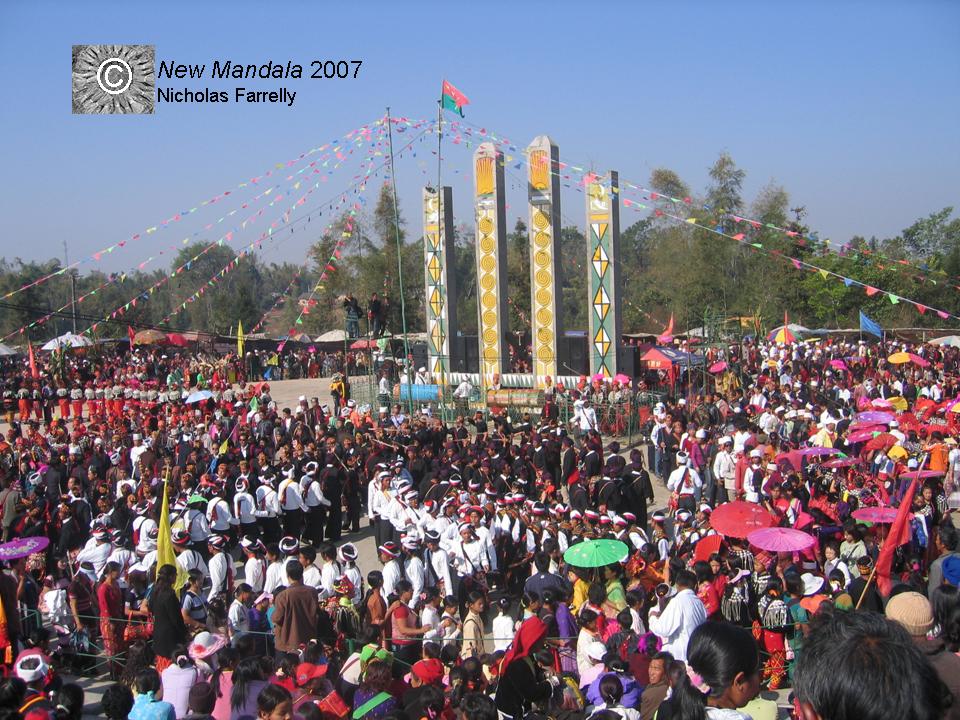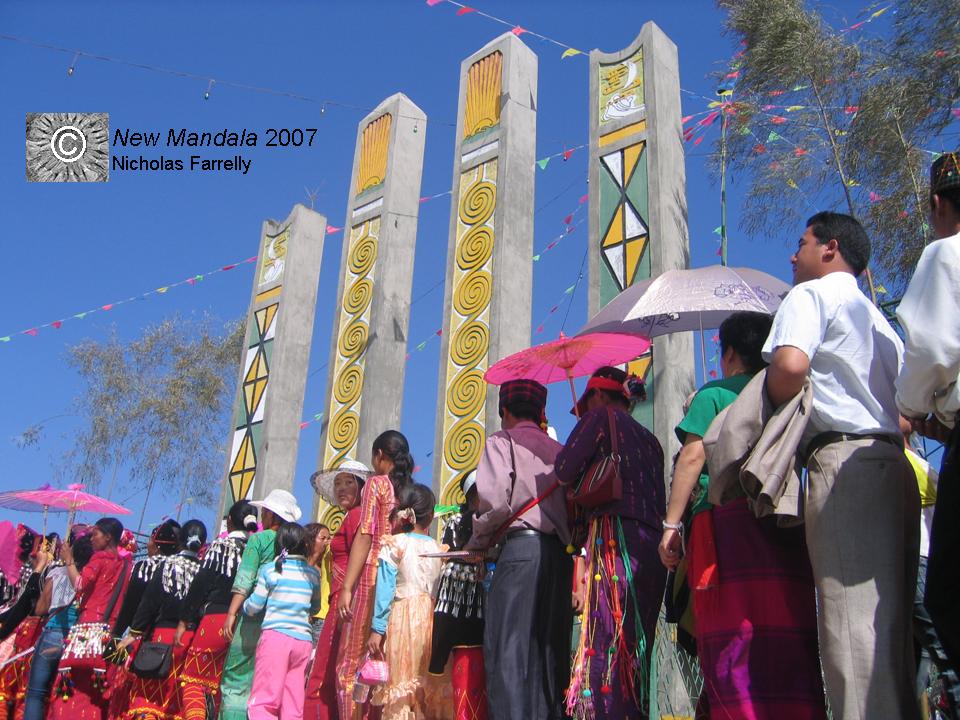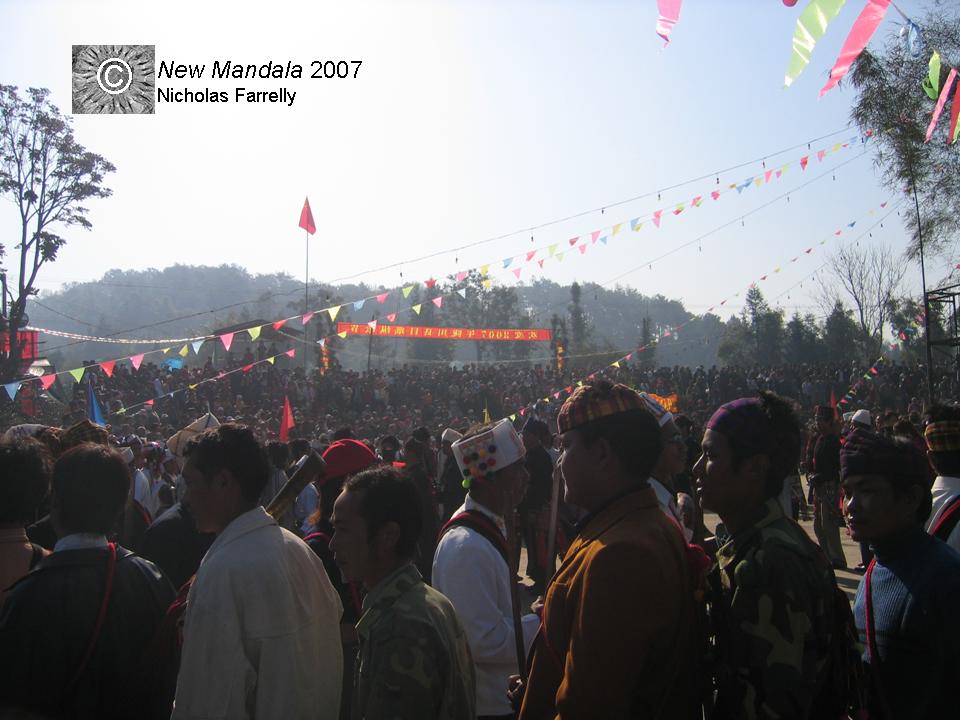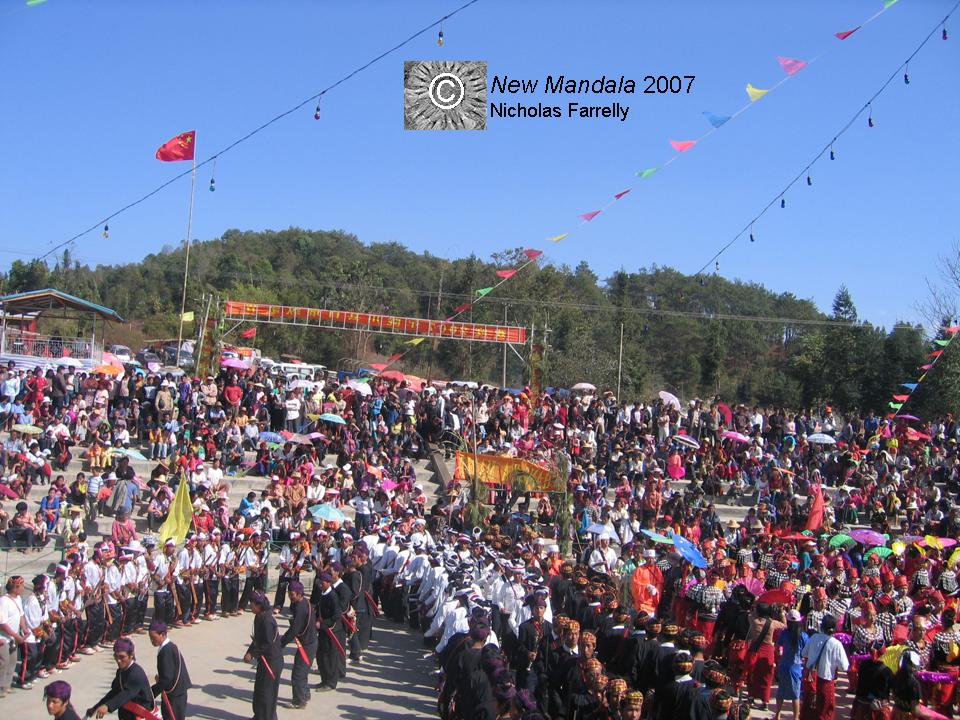The following photographs are designed to give a general overview of the dances at a Jingpo Manau. These images are provided to help contextualise future posts that will examine specific elements of the festivities.
Manau festivals are commonly held over multiple days and involve large-scale formation dancing. It is, therefore, helpful to have at least some idea of the shape and colour of the public performances. Manau are held in areas of northern Burma (in the Kachin and Shan states), in southwest China (in some areas of Yunnan), in northern Thailand (in Chiang Mai province) and in northeast India (in Arunachal Pradesh). Some are annual events while others are held less frequently and reserved for specific special occasions.
Image 1: A Manau dance
This is the first session of dancing at the Manau I attended. This snapshot gives some feel for the way that the dancers form patterns on the Manau ground. The twirling, twisting shapes of the dancing formations are supposed to mimic the patterns on the Manau posts. This photograph was taken from a concreted viewing terrace that abuts the Manau ground.
Image 2: The Manau Poles
The Manau poles (Manau Shadung) are the central feature of the Jingpo Manau and are arguably the key symbol of the Kachin groups (Jinghpaw, Jingpo and Singpo) across mainland Southeast Asia. Different Manau grounds have different numbers of poles and the patterns etched and painted on them also vary somewhat across Southeast Asia.
Image 3: Red Flag over Manau
This Manau was held on Chinese territory, only a few kilometers from the Sino-Burmese frontier. The Chinese flag flutters in the distance and beneath the flag the audience watches closely.
Image 4: Dancing continues on the final day
This final session of dancing drew a much smaller crowd than earlier in the week. The dancers are, however, still excited to have a final chance to show off their moves.
This post is part of the New Mandala feature on the “Yunnan Fringe“.
 Facebook
Facebook  Twitter
Twitter  Soundcloud
Soundcloud  Youtube
Youtube  Rss
Rss 


